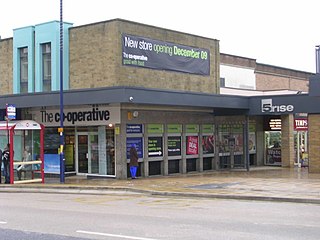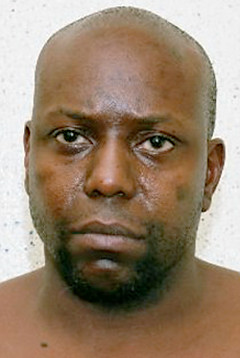
Bingley is a market town and civil parish in the metropolitan borough of the City of Bradford, West Yorkshire, England, on the River Aire and the Leeds and Liverpool Canal, which had a population of 18,294 at the 2011 Census.

Peter William Sutcliffe, also known as Peter Coonan, was an English serial killer who was convicted of murdering thirteen women and attempting to murder seven others between 1975 and 1980. He was dubbed in press reports as the Yorkshire Ripper, an allusion to the Victorian serial killer Jack the Ripper. He was sentenced to twenty concurrent sentences of life imprisonment, which were converted to a whole life order in 2010. Two of Sutcliffe's murders took place in Manchester; all the others were in West Yorkshire. Criminal psychologist David Holmes characterised Sutcliffe as being an "extremely callous, sexually sadistic serial killer."

Graham Frederick Young, also known as the Teacup Poisoner, was an English serial killer who murdered his victims via poison.

Broadmoor Hospital is a high-security psychiatric hospital in Crowthorne, Berkshire, England. It is the oldest of England's three high-security psychiatric hospitals, the other two being Ashworth Hospital near Liverpool and Rampton Secure Hospital in Nottinghamshire. The hospital's catchment area consists of four National Health Service regions: London, Eastern, South East and South West. It is managed by the West London NHS Trust.

Peter Howard Moore is a British serial killer who managed cinemas in Bagillt, Holyhead, Kinmel Bay and Denbigh in North Wales at the time of his arrest. He murdered four men in 1995. Due to his trademark attire of a black shirt and tie, he was dubbed the "man in black".

Rampton Secure Hospital is a high-security psychiatric hospital near the village of Woodbeck between Retford and Rampton in Nottinghamshire, England. It is one of three high-security psychiatric hospitals in England, alongside Ashworth Hospital in Merseyside and Broadmoor Hospital in Berkshire. It is managed by Nottinghamshire Healthcare NHS Foundation Trust.

PC Sharon Beshenivsky was a West Yorkshire Police constable shot and killed by a criminal gang during a robbery in Bradford on 18 November 2005, becoming the seventh female police officer in Great Britain to be killed on duty. Her colleague, PC Teresa Milburn, was seriously injured in the same incident. Milburn had joined the force less than two years earlier; Beshenivsky had served only nine months as a Constable in the force at the time of her death, having been a Community Support Officer before.

The Brides in the Bath is a 2003 television film by Yorkshire Television for ITV, based on the life and trial of British serial killer and bigamist George Joseph Smith, the "Brides in the Bath Murderer". Martin Kemp plays the role of Smith, and Richard Griffiths plays barrister Sir Edward Marshall-Hall. The film was directed by Harry Bradbeer, and written by Glenn Chandler.

Colin Campbell Norris is a Scottish serial killer and former nurse convicted for the murder of four elderly patients and attempted to murder another in two hospitals in Leeds, England in 2002.

Red Riding is a British crime drama limited series written by Tony Grisoni and based on the book series of the same name by David Peace. The series comprises the novels Nineteen Seventy-Four (1999), Nineteen Seventy-Seven (2000), Nineteen Eighty (2001) and Nineteen Eighty-Three (2002), and the first, third, and fourth of these novels became three feature-length television episodes, Red Riding 1974, Red Riding 1980, and Red Riding 1983. They aired in the United Kingdom on Channel 4 beginning on 5 March 2009. The three episodes were released theatrically in the United States between 5 and 11 February 2010, by IFC Films.

Peter Bryan is a British serial killer with schizophrenia who committed three murders between 1993 and 2004.
The Bradford murders were the serial killings of three women in the city of Bradford, West Yorkshire, England in 2009 and 2010.
The Dundee school shootings was a 1967 incident at St John's Roman Catholic High School in Dundee, Scotland.
Kenneth Erskine is a British serial killer who became known as The Stockwell Strangler. He committed the murders of 7–11 senior citizens in London between April and July 1986.
The Gypsy Hill killings were a group of five homicides of young women and girls in San Mateo County, California, during early 1976. The killer became known in the media as the "San Mateo Slasher." It was later proven that there were at least two different perpetrators with Rodney Halbower convicted of the murders of Baxter, Cascio and Michelle Mitchell and Leon Seymour being convicted in the sole murder of Lampe. It is believed Blackwell and Booth were killed by Halbower, but there's no evidence yet to tie him to those cases and Friedman's murder is also unsolved with these killings being partially unresolved.

The murder ofCarol Wilkinson, a young woman from Bradford, West Yorkshire occurred on 10 October 1977. Anthony Steel spent 19 years in prison for the murder, before having his conviction quashed in 2003. Steel died shortly after in 2007 at the age of 52.
This is a list of sex workers who were murdered in the United Kingdom.
Anthony Arkwright is a convicted British spree killer who, over the course of 56 hours in August 1988, murdered three people in Wath-upon-Dearne, South Yorkshire. Arkwright is also suspected of murdering a fourth person during his killing spree, the charge of which Arkwright's trial judge ordered to lie on file. Arkwright was 21 years old at the time of the killings and was 22 when he was convicted. He is currently serving a whole-life tariff.
The Rzeszowski family homicides occurred on 14 August 2011 in Saint Helier, Jersey in the Channel Islands. Damian Rzeszowski stabbed to death six people including four members of his family. He was found guilty of manslaughter with diminished responsibility and sentenced to 30 years in prison for each victim. He died in a suspected suicide in HMP Full Sutton on 31 March 2018.

On 22 March 2020, 7-year-old Emily Grace Jones was stabbed at Queen's Park in Bolton, Greater Manchester, England, while riding her scooter and died shortly afterwards. Eltiona Skana, a 30-year-old Albanian woman unknown to the Jones family, was arrested on the scene and later charged with murder.













